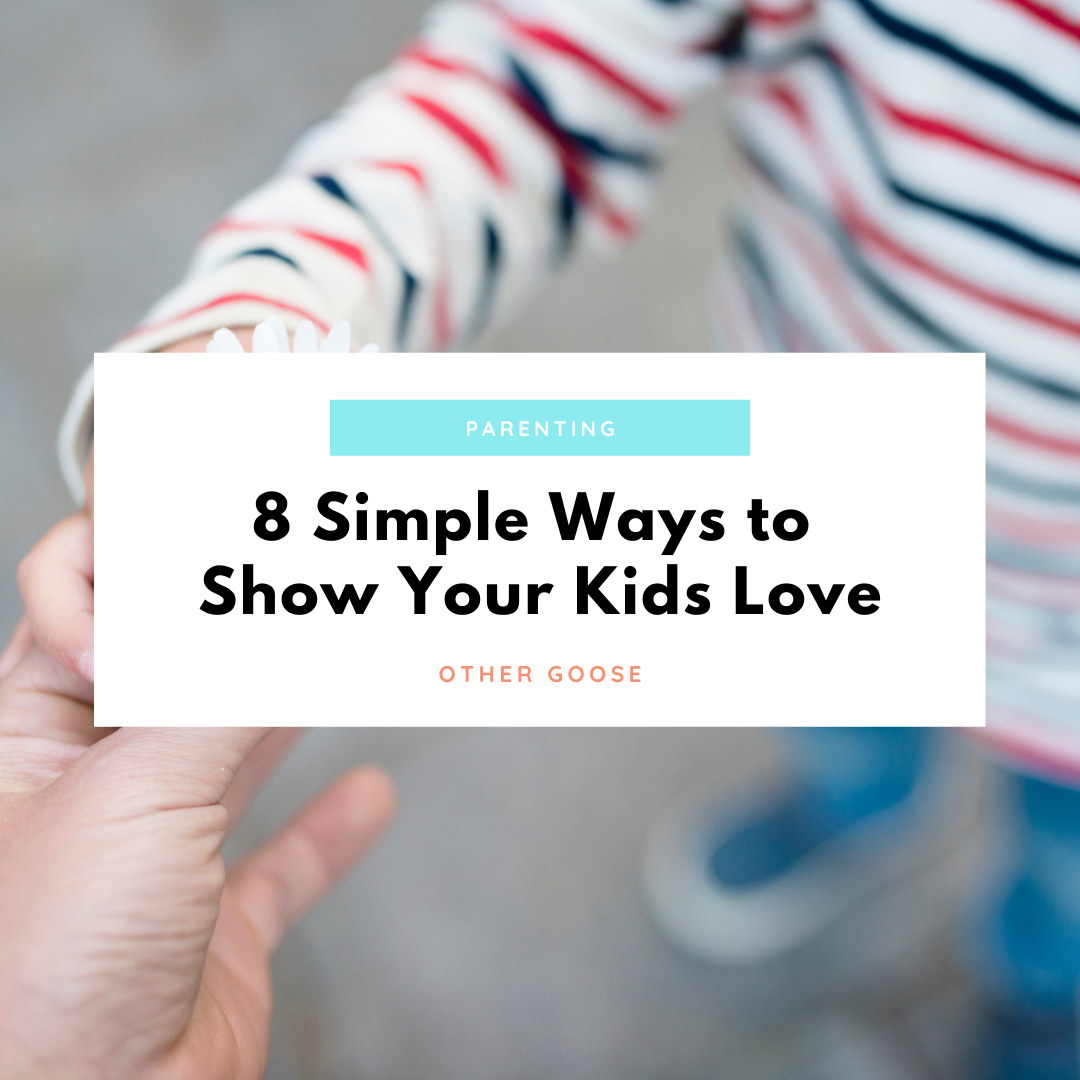
Want to hear how kids spell ‘love’? P-L-A-Y.
Day after day, playing together reinforces a child/parent bond, helps to build enduring memories, and lays the framework for mutual cooperation and respect within the family unit. In fact, play is so important to child development that it’s been elevated by the United Nations High Commission for Human Rights as a birthright (not a privilege!) of every child.
But for littles under 7 who often require so much time and energy in other areas, sitting down on the floor to play Barbies doesn’t always make the tip-top of our to-do list, you know? We hear it daily: “I really do want to play with my kids, but it just feels so… boring!”
Trust us; it doesn’t have to be. Most of us are simply missing one integral step: finding our play language.
What’s Your Play Language?
Do you love spontaneous spurts of competition? Physical activities like shooting hoops in the driveway or catch in the backyard might be your thing. Are you more into a predictable experience with a clear beginning, middle, and end? Board games or puzzles are the perfect fit. Do you consider yourself a creative spirit with a flair for dramatics? Try make believe, charades, or act out a funny read-aloud.
The bottom line is this: not all play is going to engage you, nor your child! Finding the sweet spot between your interests and your child’s preferences are a surefire way to spark delight in everyone involved.
Ready to hear 8 ways to show your kids love? Below, we’ve rounded up our members’ favorite lesson prompts from our crowd-pleasing daily curriculum. From family mail to secret handshakes, each challenge promises to be simple and playful, covering every play language under the sun (and then some!).
8 Play-Based Ways to Show Your Kids Love
Introduce Family Mail
Encourage your child to build a “mailbox” to keep outside his/her room: a painted cardboard box with an official “slot,” a simple envelope taped to the door – whatever your child chooses to create will work perfectly! (If interest allows, he/she can create one for you, too!) Once finished, leave a message, picture, painting, and/or sweet surprise in your child‘s mailbox to check before bed. Encourage your child to “write back” to every letter he/she receives, or to mail frequent thank-you notes to other family members’ mailboxes.
Why it Matters: Kids love anything that bridges the gap between their world and our own. As your child ages, this practice will motivate him/her in writing, sentence structure, spelling, vocabulary, and reading. But perhaps most importantly? Family mail is a built-in way to boost parent-to-child connection, communication, kindness, and gratitude – solidifying lasting bonds for years to come.
Make Your Family Time Capsule
Find a sturdy box, secure container, or storage bin to gather your family’s beloved memories. (If you plan to bury your time capsule outdoors, you’ll want a more weatherproof solution, e.g., stainless steel.) As a family, brainstorm a few items to include that are representative of your crew. Some fun starters: a take-out menu from a favorite restaurant, receipt from the grocery store, a favorite outgrown t-shirt, a current family portrait, the front page of today’s local newspaper, a beloved-but-outgrown small toy, doll, or stuffed animal. Younger kids can be “interviewed” to answer questions about current interests, future predictions, etc. Older kids can practice copywork and narration by writing their own or filling out our handy printable.
Finish the project by penning a short letter to your future family and seal the contents. (Hint: You can save silica gel packets to toss in for added preservation!) Invite your child to decorate the capsule and to help choose the perfect hiding place to store the capsule. Don’t forget to mark your calendar for a desired “unveiling” date – 10, 15, or (gasp!) 25 years down the road!
Why it Matters: We know the truth: there are so many parts of this gig we’ll miss. Today, we’re vowing to remember a sliver of them. Added bonus? Along the way, your child will sharpen his/her skills in so many areas: time passage, vocabulary, 1:1 correspondence, language, imagination, and – perhaps most importantly – gratitude for a strengthened family culture.
Leave a Secret Message For Your Child
On white paper with a white crayon, write a love note for your child. Explain to him/her that the creation is invisible, and you’ll need his/her help revealing it! Then, show your child how to paint over the crayon with watercolors to discover the secret art.
Why it Matters: Not only are you putting a fun twist on everyday motor skills, but your child is getting a first look at adhesion and cohesion: two foundational scientific elements that shape our early understanding of surface tension. Perhaps more importantly? An affirming love note from a present parent does a body, soul, and mind very good indeed.
Invent a Secret Handshake
This week, work with your child to develop a secret, family-wide handshake. Try a short sequence first – High five! Fist bump! Twinkle hands! – and if interest allows, build from there. How long can you go? If interest allows, add words, a song, or a rhyme to the hand motions. Involve as much of the family as possible in the brainstorming – the sky’s the limit!
Why it Matters: Sequencing and ordering motions are natural ways to practice logic and deduction with your child. By adding a family handshake to the challenge, you’re prioritizing happy, healthy reminders of physical affection, attention, and ongoing acceptance.
Host a Cloud Watch
Grab a blanket and a few snacks, and shoo everyone outside to a yard or nearby park. Your only assignment: look up! Ask your child what shapes he/she sees in the sky, which direction the clouds are moving, or where he/she thinks they’re headed. (Note: Is your child a particularly curious cloud-watcher? Encourage him/her to bring along a paper and pencil to sketch the sky’s findings. Then, together, take a peek at pattern identification and how clouds affect weather predictions right this way!)
Why it Matters: Scientific foundations aside, cloud watching is proven to be a meditative practice for both kids and adults alike. Looking up at the sky raises global awareness and – surprisingly – promotes a sense of humility. With a few moments, fresh air, and some deep breaths, you’ll all feel refreshed, energized, and more at peace.
Plan a Wacky Wednesday
This Wednesday, spice up the day, and perform a variety of actions the “opposite” way to see if your child notices. Wear your shirt inside out, turn a dining room chair upside down, serve breakfast for dinner, walk backwards to the bedroom — anything goes! Once your child catches on, declare “Wacky Wednesday!,” and invite him/her to join you in brainstorming more fun ways to transform the mundane. Consider honoring “Wacky Wednesday” as a beloved tradition once per month – it’s the perfect, just-for-fun break to reach for when the whole family’s in need of a recharge!
Why it Matters: While homeschooling offers a beautiful rhythm as a whole, there’s so much joy to be found in flipping the day upside down. By setting aside time to celebrate for “no reason at all!,” you’re modeling for your child the practice of infusing spontaneity, ingenuity, and fun into his/her everyday routine.
Reinvent the Bedtime Story
Tonight, try a new bedtime story with your child as the main character! Begin with, “Once upon a time,” and then slowly narrate the day you spent together from morning until present time, e.g., “Once upon a time, your child woke up to the sun, called for his/her mother, and gave her a hug. Then, they ate banana pancakes and drummed on the counter with forks…” Leave in as many happy details as you can, paying special attention to specific moments you remember your child practicing kindness, self-control, or any positive attributes your family culture appreciates.
Allow this sweet, undistracted moment to address any behaviors, emotions, or consequences your child experienced during the day, whether with you or apart from you. Feel free to ask your child, “What did I miss in tonight’s story?” and enjoy listening as your child shares the day from his/her perspective.
Why it Matters: This simple narration conjures up your child‘s busy and full day, leaving him/her with a sense of completion and readiness for rest. Bonus: you’re offering your child space for connection as he/she grows older and begins to fill in the blanks of his/her own story.
Take a Hike
As they say in Sweden, “There’s no bad weather, only bad clothing!” Whether the clouds are out or the snow is falling, bundle up your child for some fresh air and good old-fashioned Vitamin D. Try a visit to a local playground, or a simple neighborhood jaunt.
Why it Matters: We all know the holistic benefits of family walks, but all too often, the ritual falls by the wayside – especially in less-than-ideal weather. Consider today’s prompt your friendly nudge to make nature a priority this week – rain or shine!
Remember: spending time with your kids in a play-based way doesn’t have to look the same each time! Take a moment to consider your play language, then choose a starter adventure from our list above.
And go ahead; bookmark this post the next time you’re conjuring up that dreaded “playing pretend Barbies on the floor” scene. With any luck, you’ll never have to re-live that one again. ;)
p.s. For a free (so delightful!) game to add to your arsenal, enjoy our very own Hide-a-Heart instant download here!

